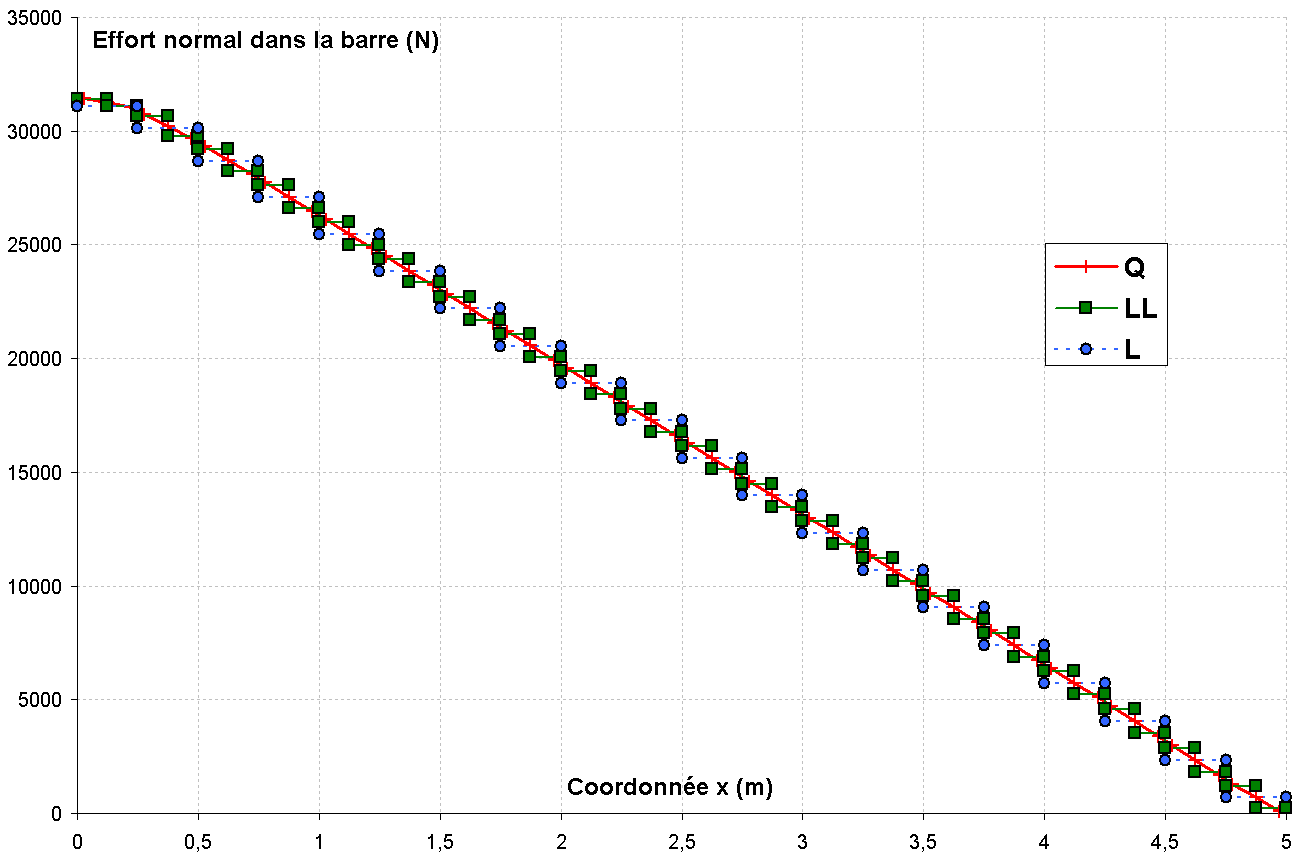2. Benchmark solution#
The aim is to validate the use of linear elements to represent the steels present in concrete represented by solid elements.
Two models are possible:
Modeling A: A quadratic solid element contains a linear bar element. The middle nodes of quadratic solid elements are not connected to the members (\(\text{L}\)).
B modeling: A quadratic volume element contains two linear bar elements. All volume nodes are connected to steel nodes (\(\text{LL}\)).
The reference solution was obtained with CASTEM 2000. The mesh used contains the same number of cells but the bar elements modeling the reinforcements are quadratic (\(\text{Q }\)).
The results in terms of stress in concrete, displacement and force in steel are compared.

Figure 1: Movement along the beam

Figure 2: Stresses in concrete

Figure 3: Effort in the bar
As a result, modeling B (\(\text{LL}\)) is very close to the quadratic Castem model \(\text{Q}\). Modeling A (\(\text{L}\)) is not sufficient and we can observe stress oscillations in concrete.
The model (\(\text{LL}\)) is therefore recommended for modeling bar elements in conjunction with solid quadratic elements.
2.1. Bibliographical references#
NECS. NOTE D’ETUDE: Reinforced concrete modeling study: quadratic concrete mesh with linear bar element. N001_A301_2012_ ET_EDF. 2012.